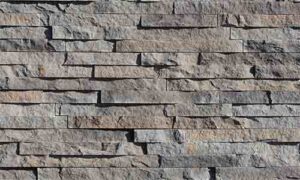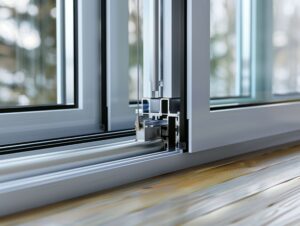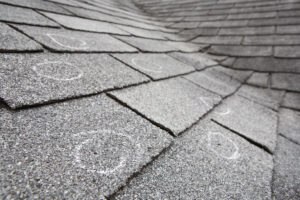If your home was built with LP siding, you might be facing a ticking time bomb—especially in the rainy climate of Bellevue, Issaquah, Kirkland, Newcastle, Redmond, Sammamish, and Woodinville. Originally marketed as an affordable and attractive alternative to wood, LP (Louisiana-Pacific) Inner-Seal siding was widely used in homes throughout the 1990s. However, its vulnerability to moisture makes it a high-risk material in the Pacific Northwest.
In this guide, we’ll break down the most common issues with LP siding, how to spot warning signs, and what you can do to protect your home.
Why is LP Siding Failing in the Pacific Northwest?
LP siding is a composite material made from wood fibers and resin, designed to mimic traditional wood siding. While it seemed like a great alternative at first, its biggest flaw is its inability to withstand prolonged moisture exposure.
In the wet climate of Bellevue and surrounding areas, rainwater can easily seep into the bottom edge of the siding, leading to swelling, mold, and eventual structural damage. Many homeowners don’t realize the extent of the damage until it’s too late—when rot has spread to the exterior walls and even insulation.
Common LP Siding Problems
1. Moisture Damage and Rot
Even with proper installation, LP siding eventually absorbs moisture over time. The most exposed areas—such as south-facing walls and lower sections—tend to suffer the most. As the siding swells, it can pull away from the structure, allowing even more water to penetrate.
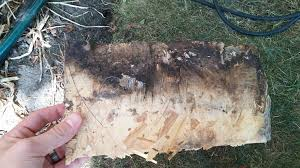
2. Peeling and Delamination
LP siding often breaks down from the bottom up, where water wraps around the exposed edges. Over time, this causes the protective outer layer to peel away, exposing raw wood fibers that absorb even more moisture. If your siding has been face-nailed, water intrusion happens even faster.
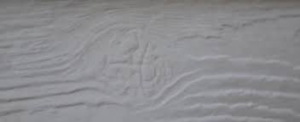
3. Mold and Mildew Growth
Once moisture gets trapped behind LP siding, mold can spread beyond the exterior, into the insulation, and even inside your home. Mold spores pose serious health risks, especially for those with allergies or respiratory issues.
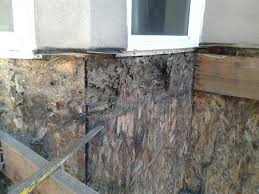
4. Thickness Swelling
A clear sign of water damage is swelling at the edges of your siding. In dry areas, LP siding should be around ¼” thick. However, in moisture-exposed areas, swelling up to ¾” or even 1″ thick indicates significant water absorption and decay.
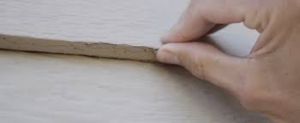
5. Rotting Wood Trim
Most homes with LP siding also have spruce wood trim, which is just as vulnerable to rot. When replacing siding, it’s crucial to upgrade to more durable materials like cedar or fiber cement trim to prevent recurring issues.
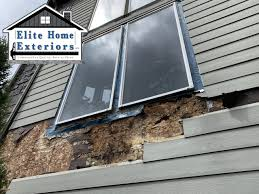
How to Protect Your Home from LP Siding Failure
1. Don’t Be Fooled by Surface Appearance
If some areas of your siding look fine, it doesn’t mean there’s no damage. Sections that are protected from rain will naturally hold up better, while exposed areas may already be failing.
2. Know the Warning Signs
If you notice bubbling, cracking, or soft spots in your siding, it’s time for an inspection. The longer you wait, the more expensive the repairs will become.
3. Replacement is the Best Long-Term Solution
Many contractors may claim that repainting will protect your LP siding, but this is a temporary fix at best. Water enters through the bottom edges and face nails, making full replacement the only real solution.
For homeowners in Bellevue, Issaquah, Kirkland, and surrounding areas, upgrading to fiber cement or cedar siding is the best way to protect your home from long-term moisture damage. While cedar siding is a premium option, fiber cement provides a highly durable, cost-effective alternative that resists moisture, mold, and fire.
The Bottom Line: Take Action Before It’s Too Late
LP siding failure is not just an aesthetic issue—it’s a serious risk to your home’s structure and your family’s health. If your home has LP Inner-Seal siding, it’s only a matter of time before moisture damage sets in. The best way to avoid costly repairs down the road is to replace failing siding with a durable, weather-resistant alternative.
At Emerald State, we specialize in LP siding replacement in Bellevue, Issaquah, Kirkland, Newcastle, Redmond, Sammamish, and Woodinville. If you suspect your siding is failing, don’t wait—contact us today for a free inspection and consultation.

